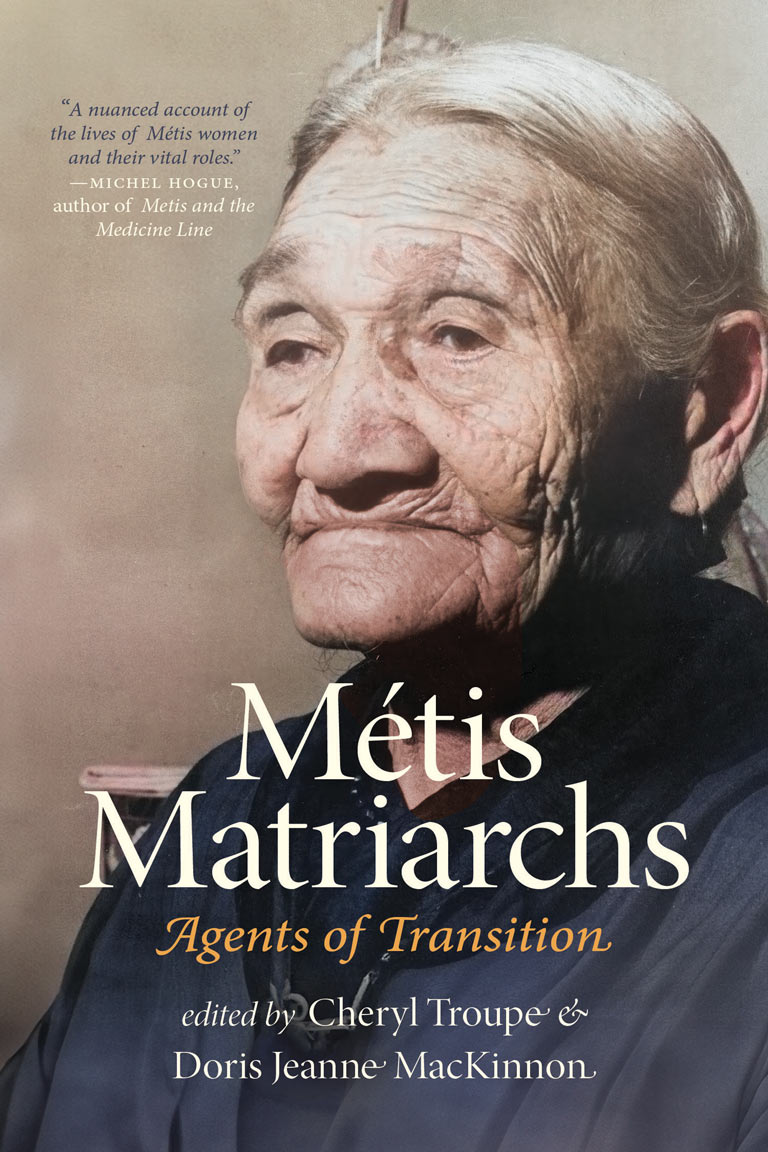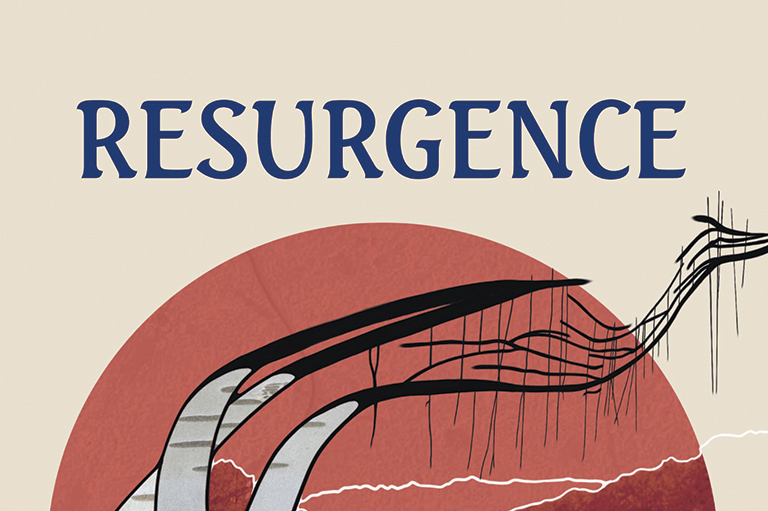Métis Matriarchs

Métis Matriarchs: Agents of Transition
edited by Cheryl Troupe and Doris Jeanne MacKinnon
University of Regina Press
351 pages, $34.95
The social-history movement that came to prominence in the 1960s sought to explore and to give voice to the lived experiences of everyday people. The movement’s aim was to cast aside the claptrap approach to history, one that extolled the supposedly innate cradle-to-grave greatness of kings, presidents, and male leaders. It’s been well over fifty years since the movement began, but in their new book Cheryl Troupe and Doris Jeanne MacKinnon prove that there are still stories that are worth uncovering.
Métis Matriarchs sets itself firmly within the parameters of social history, as an edited collection of “quantitative case studies” of Métis women that follow a biographical approach. Using matriarchy as a lens, these life stories offer insights into the collective experiences of Métis women, foregrounding “herstory” rather than the often-privileged masculine historical scholarship of the Canadian prairies.
Readable as a stand-alone piece, the book’s introduction provides readers with the contextual structure — the places, spaces, and historical events — through which these Métis matriarchs navigated their lives.
With 7 uniquely curated newsletters to choose from, we have something for everyone.
Framing their life histories around kinship and familial ties, the book organizes eight case studies thematically. Themes range from feminine agency, to economic and cultural transition, to resilience and survival. Many of the stories lead back to the Red River Colony in what is now Manitoba, but the majority take place further west after the 1869–70 Resistance in what is now Saskatchewan, Alberta, and British Columbia.
Troupe and MacKinnon’s editorial skills bring a commonality of tone to essays written by different female authors while making room for each writer to tell a unique and authentic story using a personal authorial voice.
We learn that Mary Rose Delorme Smith was sold for fifty dollars to a Swedish newcomer, before giving birth to seventeen children and outliving him by decades. Jade McDougall writes about her great-great-grandmother Caroline McNabb receiving a convent education, a marker of “status and social prestige.” One chapter is set in Cumberland House, in what is now Saskatchewan, and uses beadwork to explore “women’s labouring, living, teaching, dressing, and caring.”
When writing about Auxile Lepine Morrison, Janice Cindy Gaudet explains how her grandmother guided her own work: “We did not belong to the stories of victimhood. Instead she was pointing me to generations of Métis women’s matriarchal resistance.”
Advertisement
Troupe penned the last chapter herself. Telling the story of her ancestor Nora Cummings, who combatted the systemic racism of her day, Troupe writes: “The women in Nora’s family taught her to be strong, courageous, and proud of being Métis.”
Grounded in the protocols of academic research, Métis Matriarchs bridges the gap between potentially dry scholarly work and sentient storytelling. The Métis matriarchs highlighted in the book are memorable characters, their stories laden with plots akin to fiction; their own words, a living dialogue, are often told by their descendants. Many Canadians today will find glimmers of their own past hidden in these words.
Troupe, an assistant professor in the Department of History at the University of Saskatchewan, and MacKinnon, an Alberta-based independent researcher, balance the nuances and diversity of the matriarchs’ lives, including the relationships between individuals and the greater collective, all the while shining a light on the commonality these women shared in providing leadership, decision making, and diplomacy.
The academic recognition of the value of oral histories, the uncovering of long-hidden diaries and personal writings, an ever-growing awareness of Métis culture, identity, and voice, and an overdue respect for the role of Métis women are together allowing historians to excavate the lives of ordinary women such as these. We are reminded that there are many stories left to be told.
If you believe that stories of women’s history should be more widely known, help us do more.
Your donation of $10, $25, or whatever amount you like, will allow Canada’s History to share women’s stories with readers of all ages, ensuring the widest possible audience can access these stories for free.
Any amount helps, or better yet, start a monthly donation today. Your support makes all the difference. Thank you!
Themes associated with this article
Advertisement
Save as much as 40% off the cover price! 4 issues per year as low as $29.95. Available in print and digital. Tariff-exempt!




